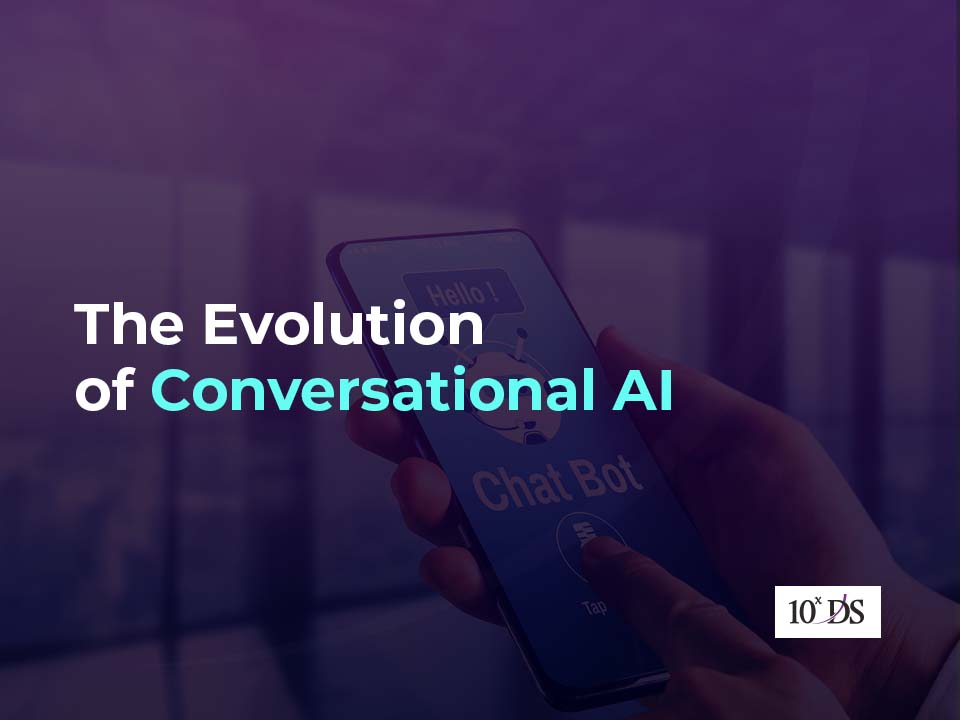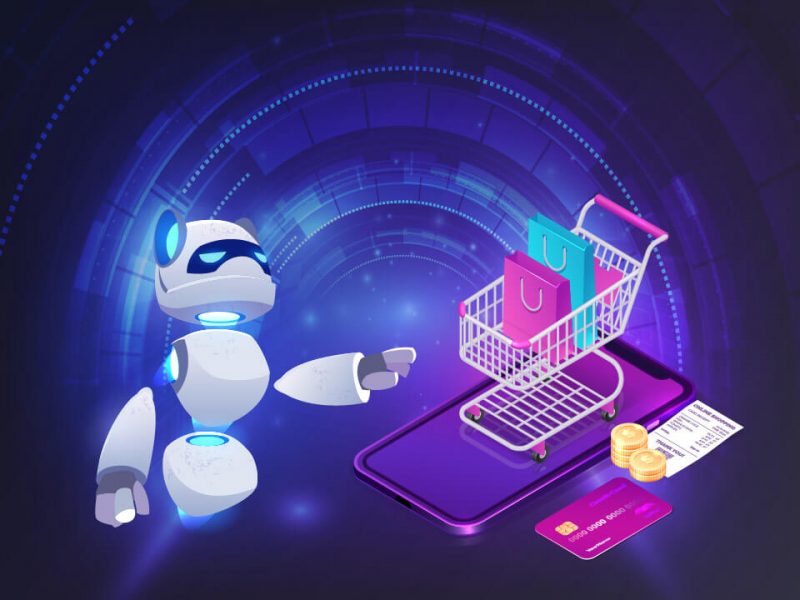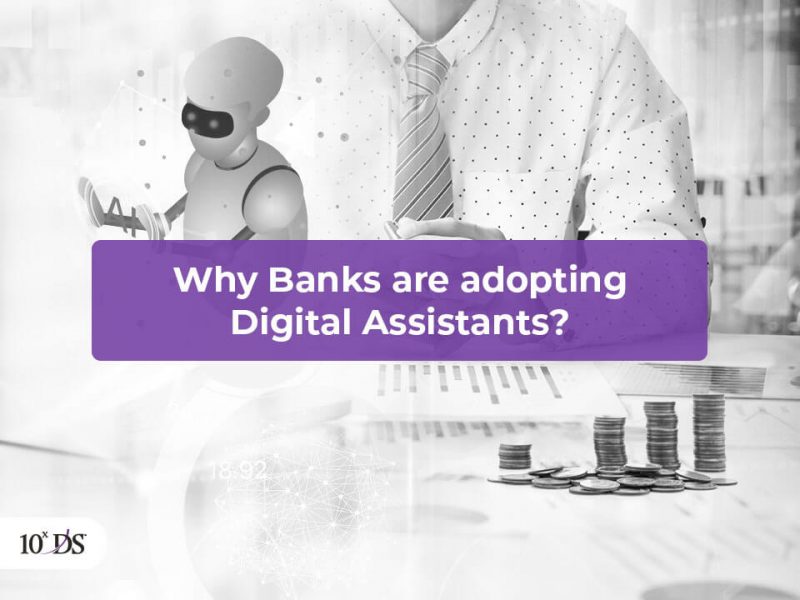
The Evolution of Conversational AI
Conversational AI (Artificial Intelligence) involves the use of advanced AI technology for conversing and communicating with prospective and existing customers and people in general. Conversational algorithms and AI solutions have gradually become an integral part of our lives. Most of us have experienced its use in chatbots and voice assistance, for a wide range of activities from buying electronic items from online stores to booking flights or hotels. Customers have already started expecting enterprises to offer customer support. In a survey conducted by Conversocial, the report found that 71% of customers preferred a Chabot if it improved their customer experience. According to Statista, the global chatbot market revenue is expected to grow to $454.8 million by 2027, from $83.4 million last year, 2021. AI technology is constantly progressing and evolving at an exponential rate which suggests that the applications of conversational AI in chatbots and other areas will also be in a constant state of change.
A Beginner’s Guide to Conversational AI
The introduction of Machine Learning, Artificial Intelligence, and Paperless Workflow along with developments in the field of cloud computing have greatly transformed our world. The increasing popularity and reliance on these advanced technologies have influenced data collection, productivity, interactions, efficiency, and analysis. Conversational AI encompasses innovative technologies and its applications such as chatbots and voice assistants capable of offering human-like interactions and they also respond to natural language. Voice assistants and chatbots make use of advanced dialogue movement, machine learning, automated speech recognition, and natural language processing. These technologies help process voice and text input and learn from interactions.
How Conversational AI works
AI chatbots use machine learning technology for understanding the input of the user or customer. This enables them to hold conversations with customers in a human-like way. Machine learning makes it possible for applications and systems to learn from their experience by identifying patterns and processing a large volume of data. Different types of algorithmic approaches such as inductive logic programming, reinforcement training, and decision tree making are tested to enable the app or software to learn with minimal intervention.
Conversational AI takes technologies like natural language processing (NLP) and natural language understanding (NLU) to the next level. NLP or Natural Language Processing is a branch of AI that focuses on empowering machines to manipulate and understand human language. The technology of Natural Language Processing allows software agents to summarize and process text along with enabling them to interact with customers through speech recognition, word sense disambiguation, sentiment analysis, and natural language generation. Conversational AI leveraging NLP allows enterprises to develop advanced dialogue systems that make use of memory, personal preferences, and contextual understanding to create a proactive natural language interface.
Everything you should know about Conversational AI
Alan Turing was the first person who hypothesized that computer programs are capable of interacting with humans and this happened in the 1950s. Eliza, the first-ever chatbot software was developed with the help of Natural Language Processing for imitating the language of a psychotherapist. This marks the first time in history when a chatbot made a human-like conversation.
The smartphone age
It is evident that smartphones and mobile devices have played an integral role in accelerating the development of AI. Most website designers found it hard to fit their websites into devices with different screen sizes during the early 2000s. They gradually started looking for a solution that enables them to offer a better user experience to website visitors.
The first chatbot technology, which was launched in the year 2001, along with the arrival of several mobile apps made it possible for users to easily find information about movie times, sports scores, stock prices, weather, yellow page listings, and more.
The creation of SmarterChild, which was available on AOL and MSN, became a major turning point when it comes to chatbot technology evolution. A number of applications were launched from the year 2010 to 2016 and some of them are Google Home, Alexa, Cortana, Google Now, and Siri.
What you should know about modern Conversational AI
Conversational AI platforms are capable of helping users with a wide variety of activities and tasks. This includes recommending products, comparing services, answering questions, handling refunds, and updating order details. Advanced conversational AI solutions are equipped with an in-built memory. This is to offer a personalized service that will remember things such as personal preferences, user location, or user address. Drawing on advanced technologies such as natural language recognition, context recognition, and UX modelling, most AI chatbots have become more efficient and human-like today. Most of the modern virtual assistance available out there can help users and businesses with the following tasks.
- Sending service reminders
- Providing delivery details
- Showcasing promotions, deals, and discounts
- Arranging roadside assistance
- Check-in for flights or cruises
- Locating service providers
Conclusion
Conversational AI has evolved to become one of the most popular forms of Artificial Intelligence, helping enterprises in a wide range of industries such as banking and finance, retail, travel and tourism, food and beverages and more. It has several use cases across different business functions such as sales, marketing, customer service and human resources (HR). With the passage of time, more businesses will be leveraging conversational AI technology to create smarter solutions with greater efficiency for delivering an excellent customer experience.
How 10xDS can help?
10xDS has a robust framework for integrating chatbots with multiple channels to take conversational AI to the next level delivering a superior customer experience to our global clients. The framework offers visualizations and dashboards to get real-time information on the chatbot usage statistics, conversation rate and others, for proper monitoring and analysis. 10xDS is also partnering with Yellow.ai to leverage their platform to offer state-of-the-art chatbot solutions to provide seamless user experience, quick responses, and automation of engagements for customers.
Talk to our experts to get started on a strategy and roadmap to use conversational AI for creating chatbots and other solutions. Build exceptional conversational experiences for your customers and employees!


